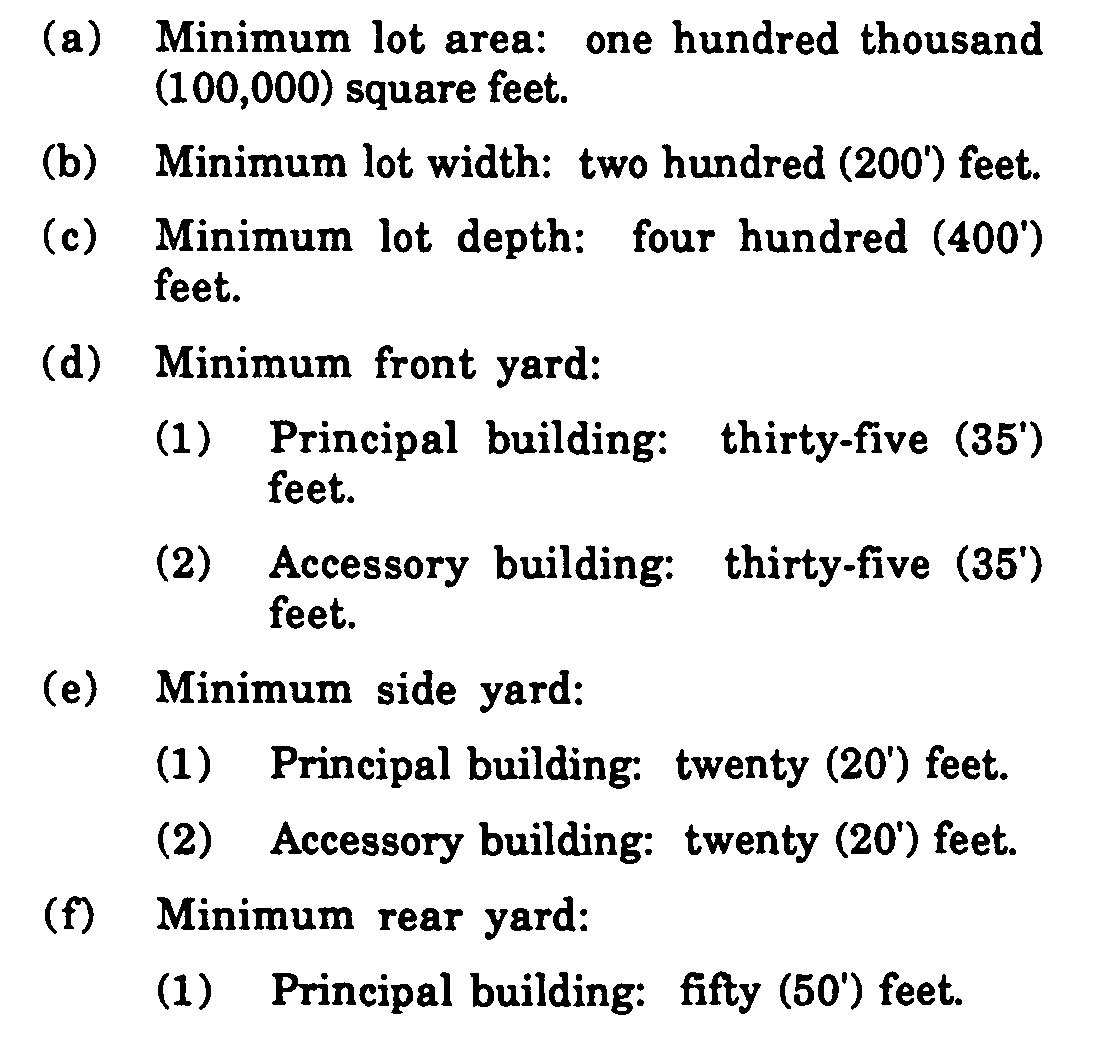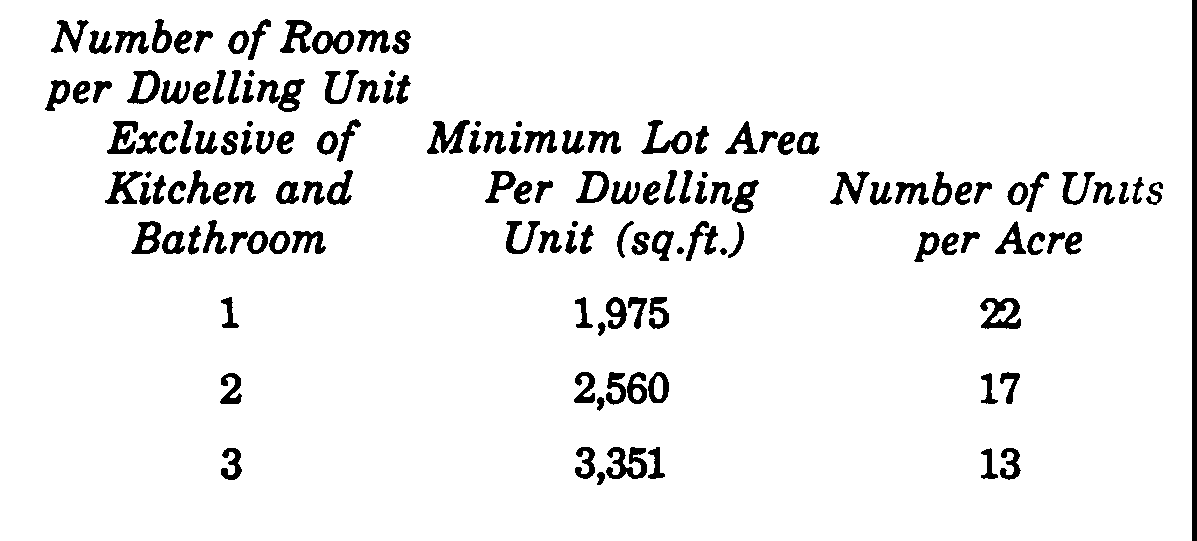a Agricultural Uses. Agricultural uses, including customary farm occupations and land which qualifies as farmland as specified in subsection 24-2.2 herein, where permitted, shall be subject to the following conditions:�
1. Building utilization for horticulture, nurseries and greenhouses and for raising and housing agricultural crops, livestock and poultry and for any other activity incidental to agricultural and farming uses is permitted, provided that no building shall be nearer than one hundred (100') feet from any lot line, except residential buildings and greenhouses which may be located in conformity with the standards for residences within those districts in which they are located.�
2. The display for sale of products grown or raised by the owner, tenant or lessee shall only be permitted where:�
(a) The products sold are in their natural state.�
(b) The sale of such products is within the confines of the property upon which they have been grown or raised.�
(c) The place of sale, whether of a permanent or temporary nature, shall not be located closer than fifty (50') feet to any lot line, nor shall the storage of any such products outside a structure be located closer than twenty-five (25') feet to any lot line.�
(d) The sale of any such products shall also require that a suitable amount of off-street parking and loading space be required.�
b. Animal Hospitals and Animal Kennels. Animal hospitals and kennels shall be located no closer than two hundred (200') feet to any residential zone line. Such facilities shall be maintained in an enclosed structure and shall be of soundproof construction and so operated as to produce no objectionable odors at the zone lot boundary line in accordance with subsection 24-8.4, paragraph d. Open kennels, exercise pens or runways shall not be located closer than four hundred (400') feet to any property line and shall be subject to noise and odor controls established for an enclosed building.�
�
c. Churches and Other Places of Worship. Churches, synagogues and other places of worship shall be governed by the following regulations:�
1. Area, Bulk and Yard Requirements.�

(2) Accessory building: twenty (20') feet.�
(g) Maximum lot coverage: thirty (30%) percent.�
2. Any church facility which maintains a school accredited by the State of New Jersey for elementary or high school grades shall also provide, in addition to the minimum lot area standards for the church, synagogue or other place of worship, a minimum lot area as approved by the New Jersey State Board of Education.�
3. Where a cemetery is provided as a part of the church property, the provisions of subsection 246.9, paragraph a. shall also be applicable.�
d. Community Buildings, Clubs, Social Halls, Lodges, Fraternal Organizations and Similar Uses.�
1. All buildings shall be a minimum of twenty - (20') feet from any property line, except where greater distances are otherwise required herein.�
2. In R Districts, where permitted, there may be included retail sales for members and their guests only.�
e. Conservation Zone District. The Conservation Zone is designated to be consistent within the special and unique character of the land. Regulations are designed to assure that the natural assets of the community such as the wooded slopes of the Ramapo Mountains and the water recharge areas of the Ramapo River are not disturbed and that potentially dangerous natural occurrences such as flooding and erosion are not aggravated. Accordingly, the following regulations are applicable:�
1. Environmental Impact Statement (EIS). An environmental impact report shall be required to accompany any application for development, including major subdivision applications, site plan approval, use variance request or any other action requiring a permit or approval from the Township. An application for development shall not be deemed complete until the EIS is submitted to all approving agencies, including any County, State or Federal agencies having jurisdiction over the project. The municipal approving authority shall condition any approval it grants upon timely receipt of a favorable report from the County, State or Federal reviewing agency.�
2. Site Development Limit. To retain the existing character of the landscape and to prevent environmental degradation of the surrounding area, land use requiring disturbance, grading, clearance and/or tree removal shall be limited to twenty (20%) percent of individual building lots.�
3. Slope Protection.�
(a) The applicant shall adequately demonstrate that erosion, siltation, soil slippage or other soil displacement caused by water, wind, vehicular traffic, pedestrian traffic, structural load, agricultural activity, recreational activity, etc., shall be completely prevented through necessary engineering, design and construction.�
(b) Damage to roots, bark, trunks or limbs of trees, poisoning of vegetation, or any other degradation of the natural ground cover except where such vegetation must be removed and replaced by other forms of ground stabilization to allow the intended use as may be caused by vehicular or pedestrian traffic, agricultural or recreational activities, construction or structural disturbances, or other unnatural causes shall be completely prevented through necessary engineering, design and construction.�
4. Pollution Control. Adequate proof and guaranty that pollution or any degradation of the purity or temperature of surface water or groundwater from any source, including sewage, solid waste, petroleum residue, chemical fertilizers, building materials, heating or cooling systems, etc., shall be provided to the Planning Board, Township Engineer and Environmental Commission.�
5. In order to assure compliance with the requirements of subsection 24-6.1, paragraph e., the approving authority may retain and/or require professional consultants or other governmental agencies to verify the information submitted by a developer. the costs for such authorized professionals shall be collected and processed as provided for in subsection 22-3.4, paragraph h. and subsection 26-3.2, paragraph f.�
6. The development of all lands within the Conservation Zone are environmentally sensitive as provided in the New Jersey State Development Guide Plan and the New Jersey Development and Redevelopment Plan as promulgated by the New Jersey State Planning Commission. In order to preserve and enhance the environmental qualities of the area and to restrict "growth inducing activities", no development within the C-200 Zone shall be permitted to be served by a public sanitary sewer system of any size or any facilities which is dependent upon linkage with the Northwest Bergen County Sewer Authority or any similar sewer system.�
f. Country Clubs and Outdoor Recreational Facilities.�
1. In R Districts where permitted, no building shall be located within fifty (50') feet of any property line.�
2. In R Districts where permitted, there may be included retail sales for members and their guests only.�
3. Unenclosed recreational facilities shall be located not less than twenty-five (25') feet from any property line, except where greater distances are otherwise required herein, and shall be effectively screened from adjoining residential uses.�
4. No public address system shall be permitted except where such system will not be audible at any property line.�
5. Other factors, such as lighting, drainage, parking and surfacing, shall be governed under subsection 24-8.5 and landscaped in accordance with subsection 24-6.11.�
6. Outdoor recreation facilities shall include golf courses, ice-skating rinks, swimming pools and tennis courts and other similar facilities.�
g. Extraction or Excavation Operations. The extraction or excavation of soil, sand, gravel, rock and other surface or subsurface materials and/or the processing of same shall meet the following requirements:�
1. Performance Standards. The performance standards of Section 24-8 shall also apply to the excavation and extraction of natural resources.�
2. Structural Maintenance. All buildings and structures shall be maintained in an adequate and safe condition at all times.�
3. Protective Fencing. The Planning Board or Construction Official shall require protective fencing or other means of protection at the site of an excavation.�
4. Rehabilitation. All land which has been excavated must be rehabilitated within one (1) year after the termination of operations, at the expense of the operator and in accordance with standards set. It is further provided that where an excavation operation has lasted longer than one (1) year, rehabilitation of land, in accordance with standards set, must be begun and completed within one (1) year's time. The Township may require a performance bond or some other financial guaranty that the conditions of this Chapter shall be satisfied.�
(a) All excavations must either be made to a water-producing depth or be graded and backfilled.�
(b) Excavations made to a water-producing depth shall be properly sloped to the waterline, with banks sodded or surfaced with soil of quality equal to adjacent land area topsoil. Such topsoil required under this subsection shall be planted with trees, shrubs, legumes or grasses.�
(c) Excavations not made to a water-producing depth must be graded or backfilled with non-noxious, nonflammable, noncombustible solid material and in a topographic character which will result in substantial general conformity to adjacent lands. Such grading or back filling shall be designed to minimize erosion and shall be surfaced with a soil equal in quality to that of adjacent land area and planted with trees, shrubs, legumes or grasses. All buildings and structures used in such operations shall be dismantled and removed by and at the expense of the operator within one (1) year following the termination of the operations.�
�
5. Buffer Zones and Landscaping. The provisions of subsection 24-6.11 shall apply.�
6. Soil Mining Ordinance. In addition, all requirements of Chapter XX of the Code, as may be amended, shall be complied with. In the event that any of these subsections are inconsistent with the Chapter, the more restrictive provisions shall apply.�
h. Floodplain and Flood Hazard Areas.�
1. No permanent structure or building or any enlargement of same which is used or designated to be used for housing, commerce, industry or public activity shall be located in a floodplain or flood hazard area. Exceptions to this restriction shall include uses which are developed above the maximum flood elevation with appropriate access provided or as provided in Chapter XVIII of the Code, as may be amended.�
2. Where an area has not been formally designated as a floodplain or flood hazard area by any Federal, State, or County governmental agency and the area is not designated as a floodplain or flood hazard area in the Township Zoning Ordinance or Official Map, the Planning Board may designate such an area as a floodplain or flood hazard area, after public hearings and after consultation with some or all of the following: the Township Engineer, the Army Corps of Engineers, the Bergen County Planning Board, the Township Environmental Commission, the Bergen County Department of Public Works and the New Jersey Department of Environmental Protection.�
3. The following uses shall be permitted within a floodplain or flood hazard area:�
(a) Agricultural and horticultural uses as defined in this Chapter, except a farmhouse.�
(b) Outdoor recreational facilities, including golf courses, ice-skating rinks, swimming pools, parks, play fields and other similar facilities.�
(c) Essential services.�
(d) In addition, all requirements of Chapter XVIII of the Code, as may be amended, shall be complied with. In the event that any of these subsections are inconsistent with the Chapter, the more restrictive provisions shall apply.�
1. Garden Apartment Uses.�
1. Density Requirements.�
(a) The maximum number of dwelling units per acre for garden apartments shall be determined by the following schedule:�
Density Requirements for Garden Apartments�
�

